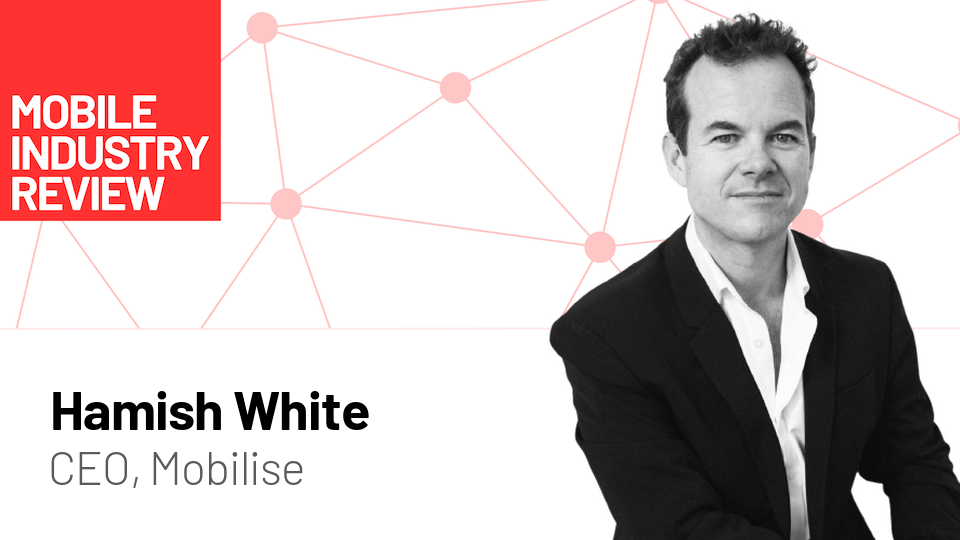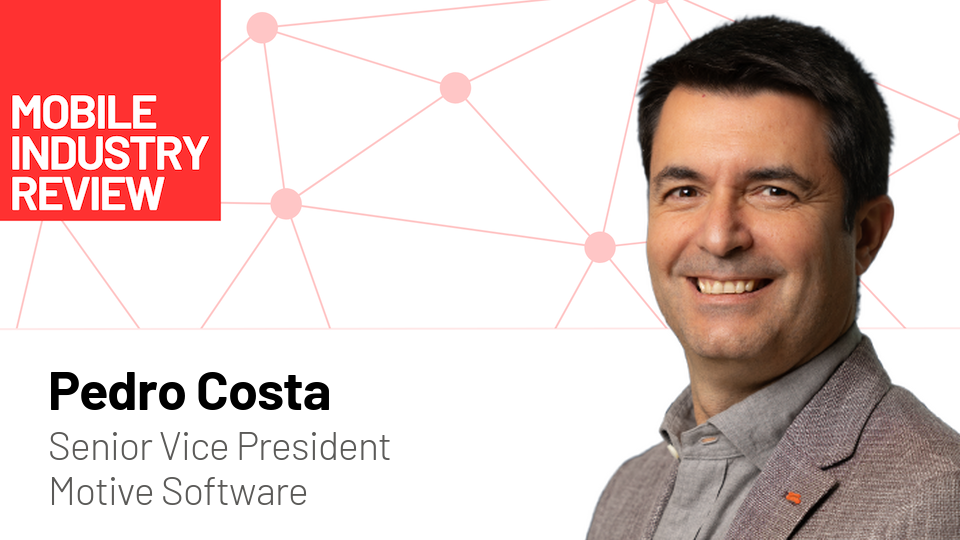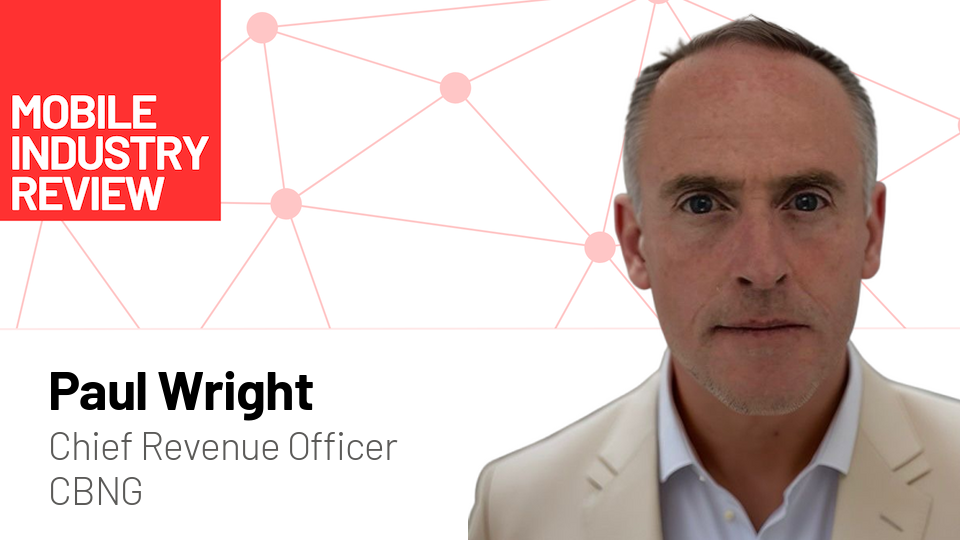Hamish White, Chief Executive Officer of Mobilise

Today we're meeting Hamish White, Chief Executive Officer at Mobilise. They specialise in providing digital-first connectivity solutions, enabling telecom operators and brands worldwide to launch, scale, and innovate faster.
Over to you Hamish - my questions are in bold:
Who are you and what's your background?
I've worked in the telecoms and technology industry for over 20 years, with a focus on innovation and business transformation. My journey began after studying business and international management, which quickly led me into the fast-moving world of mobile. I've held leadership roles across both operator and vendor sides of the industry, which gave me a unique perspective on the challenges telecom companies face in adapting to changing consumer expectations.
Founding Mobilise was a natural evolution — I wanted to build a company that combined deep telecom know-how with a software-first approach to customer experience. Over the years, this vision has grown into a global business that partners with operators, brands, and digital disruptors across multiple markets.
What is your job title, and what are your general responsibilities?
As CEO of Mobilise, my role is to set the company's strategic direction and ensure that we continue to innovate and deliver value to our customers. Day-to-day, I split my time between engaging with clients and partners, overseeing our leadership team, and exploring new opportunities for growth.
I'm also heavily involved in shaping our product roadmap and ensuring Mobilise remains at the forefront of digital transformation in telecoms. At heart, I'm passionate about building high-performing teams and empowering people to do their best work.
Can you give us an overview of your business and what drew you to lead the organisation?
Mobilise provides software and managed services to the telecom industry, with our flagship HERO® platform enabling operators to launch and scale digital-first propositions quickly. We help our clients focus on what matters most: building customer relationships, reducing complexity, and staying competitive in a fast-changing market.
What drew me to lead Mobilise was the opportunity to make a tangible difference. Telecom has often been seen as slow-moving, but I believe we could change that by offering agile, software-driven solutions. Today, I'm proud that Mobilise works with some of the world's most ambitious brands to deliver truly differentiated customer experiences.
Who are your target customers? What's your revenue model?
Our target customers are telecom operators, MVNOs, and digital-first brands that want to leverage connectivity to strengthen their customer engagement. We also partner with enterprises outside of traditional telecoms that see connectivity as part of their offering.
Our revenue model is SaaS-based, with licensing and recurring service fees. This allows our clients to scale in a predictable way while ensuring Mobilise remains invested in their long-term success. We complement this with professional services and managed operations, making us a true end-to-end partner.
What's the most challenging problem your team has solved recently?
One of the toughest challenges we tackled recently was deploying a large-scale digital transformation project for a client under very tight deadlines. The project required deep integration across legacy systems, CRM, billing, and apps — while maintaining service continuity for end-users.
Our team's ability to deliver this successfully came down to three things: strong collaboration, our modular HERO® platform, and a relentless focus on outcomes. It proved not only our technical capabilities but also the resilience and dedication of our people.
If you had a magic wand, what one thing would you change in the mobile industry?
If I had a magic wand, I would remove the fragmentation that still exists across the industry when it comes to standards and interoperability. Too often, innovation is slowed down by legacy approaches, siloed ecosystems, and protectionist thinking.
Creating a more open and collaborative environment would unleash new levels of innovation and deliver better outcomes for consumers worldwide.
What is your message for the larger players in the mobile industry marketplace?
The telecom industry has reached a critical point where customer experience and innovation must come before scale and inertia. Larger players have a unique opportunity to lead by example — to embrace digital-first approaches, foster partnerships, and champion interoperability.
My message is simple: don't let size hold you back from agility. The ecosystem as a whole benefits when we create an environment where both small innovators and large incumbents can thrive together.
Where do you get your mobile industry news from?
I read a mixture of industry publications and analyst reports, including Mobile World Live, Telecoms.com, and GSMA Intelligence. I also value newsletters from specialist consultants and follow conversations on LinkedIn, which often surface emerging trends earlier than formal publications.
Podcasts and thought-leadership articles from within the industry also play a role in helping me stay ahead of the curve.
Can you list 3 people you rate from the mobile industry that we should be following on LinkedIn, and why?
- Sebastian Barros – He provides a global perspective on trends, societal, and technological issues shaping the future of mobile.
- Iain Morris – His commentary helps cut through the noise, connecting the dots between telecom, big tech, and telecoms vendor environment.
- Luke Kehoe – A thought leader in his own right, Luke has a sharp vision of how telco is evolving and how technology and regulation are shaping the telecom sector over the next decade.
What are your go-to mobile apps for both work and personal use?
For work, Slack and Teams are indispensable for collaboration, while Notion and Trello help with organisation and planning. LinkedIn is also a critical tool for industry networking and insights.
On the personal side, I use Spotify for music, Strava for cycling, and WhatsApp for keeping in touch with family and friends across borders. I also keep an eye on fintech and travel apps, as these sectors often lead the way in digital experiences.
Tell us about your approach to mobile devices - what do you use and what drives your upgrade decisions?
I primarily use Apple devices — currently the latest iPhone and MacBook — because of their reliability and ecosystem integration. For me, productivity and security are the biggest drivers, so I tend to upgrade when I feel there's a meaningful improvement in these areas.
That said, I also keep a close eye on Android flagships, as understanding both ecosystems is important when working with global clients.
What's the best new mobile technology product or service you've seen recently?
I've been impressed by the rapid rise of eSIM technology and how it's being applied to create seamless global connectivity solutions. From travel to enterprise security, eSIM is unlocking new possibilities and business models.
It's an area Mobilise is deeply invested in, and it's exciting to see the wider industry starting to embrace its full potential.
Finally, let's talk predictions. What trends do you think are going to define the next few years in the mobile industry?
I believe the next few years will be defined by three key trends:
- eSIM and digital identity becoming mainstream, powering everything from travel to IoT.
- AI-driven personalisation — operators will increasingly use AI to tailor services, improve retention, and streamline support.
- Convergence of telecom and adjacent industries — from fintech to entertainment, connectivity will be embedded in more consumer experiences.
Those who adapt fastest to these shifts will be the ones who thrive.
Thank you very much, Hamish!
Read more about Hamish White on LinkedIn and find out more about Mobilise at mobiliseglobal.com.



